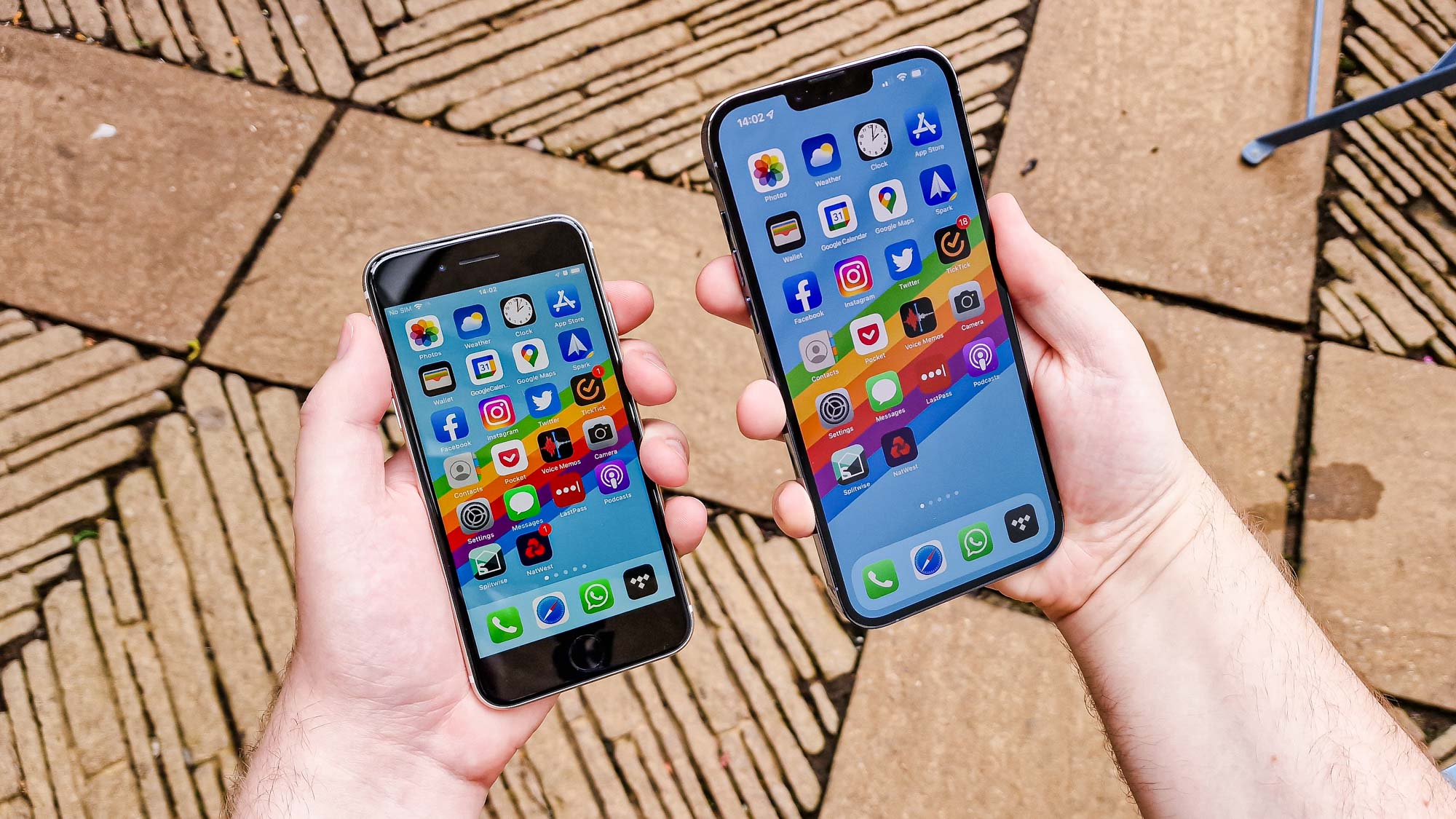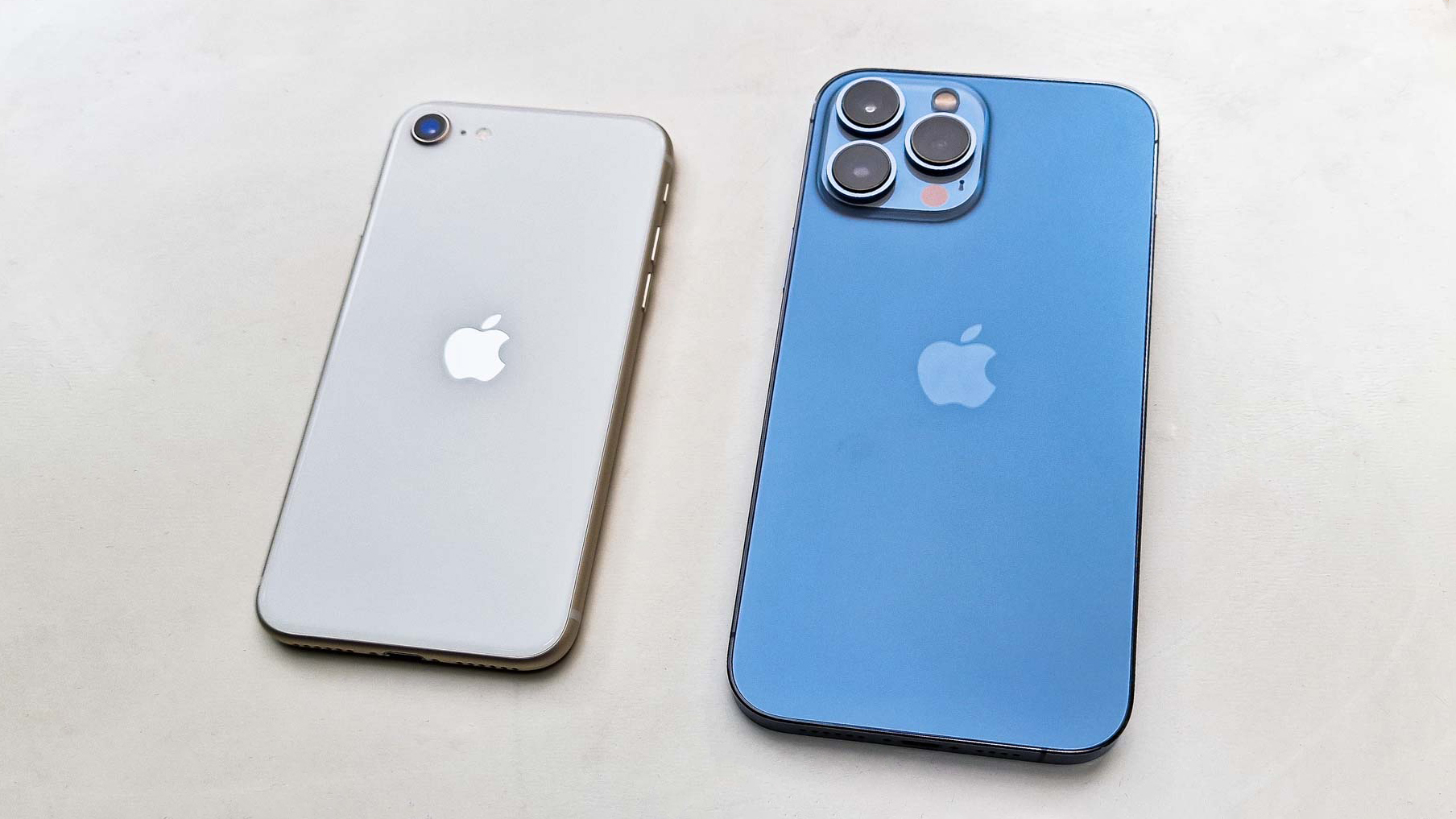I swapped from an iPhone 13 Pro Max to an iPhone SE — here's what happened
Moving from Apple's best phone to its cheapest helps put things in perspective

We live in a time where buying flagship phones, like the iPhone 13 Pro Max I use daily, is likely not the best use of your limited resources. So with the iPhone SE (2022) having just arrived, I decided to find out what it was like to go from Apple's most expensive phone to its cheapest.
iPhones are the most popular type of smartphone around, but also the most costly. Therefore if the cheapest possible iPhone can still provide everything you need from it, it'll provide some comfort to users in need of an upgrade who can't stretch their budget to a more premium phone.
An unpleasant start
My first observation after moving my data over was that I really, really don't like 60Hz phone displays. I predicted this before I even started. Having used 120Hz panels on the iPhone 13 Pro Max and countless Android phones over the past several years, going back to a regular refresh rate makes me feel like my eyes are going weird. Even though the iPhone 12 Pro I used last year had a 60Hz display, the iPhone SE still pales in comparison with its dimmer, less vibrant LCD panel. Of course, unless you're using one of the newest iPhones, or are swapping from Android, you won't notice a difference from other 60Hz iPhones.
While I was tempted to swap to my PC or iPad for the video watching or social media/internet browsing/online shopping I normally use my phone for, I stuck with the iPhone SE to make sure I got a proper sample of its abilities. Honestly, the display is fine, and still looks good for a screen that's five years old. I just know there are far better options out there.

Perhaps the biggest actual problem I had though was the battery life, which kept running low while still being primarily on Wi-Fi all day. I'm used to the amazing battery in the iPhone 13 Pro Max finishing a full day of work and being out in the evening around 30 - 40%, whereas the iPhone SE was flagging at the same level by lunchtime. Your mileage will definitely vary depending on how you use your phone, but this really isn't enough for a regular smartphone user in 2022.
Things get better
After that bumpy first impression, I started to find stuff that I liked about the SE. For one, its size. Basically, no modern smartphone phone other than the iPhone 13 mini is this small, and that's rumored to not be getting a replacement with the iPhone 14 series. The fact I can basically touch any part of the display when holding the SE one-handed, or fit it into a jeans pocket sideways, make it a very convenient phone to carry around.
I also appreciate the curved sides. I love the look of the slab-sided iPhone 13, but it's not the most comfortable phone to wrap your hand around. I'd not object if Apple moved back to curved sides on the iPhone now the overall handsets are larger, based on my time with the SE.
Get instant access to breaking news, the hottest reviews, great deals and helpful tips.
That said, I don't like typing on a phone as small as the SE for long periods of time. My thumbs aren't used to tapping out continuous messages or article copy on its 4.7-inch screen, and after a little time, the end result is either a cramp or a bunch of typos.
Over the week, I also remembered how good Touch ID and a home button are as methods of unlocking and controlling a phone. I also quite like having Control Center available by swiping up from the bottom of the screen at any time. Having this gesture on a Face ID iPhone would interfere with app switching, but it's easier to access than having to reach into the top right corner of the screen.

Since Apple uses the same A15 chipset in the iPhone SE as the iPhone 13 series, there's no slowdown in performance. I was able to play Townscaper and Grid Autosport just as smoothly as I could on the larger, more expensive iPhone, even if it doesn't look as good on the smaller, less colorful SE display.
The camera still works surprisingly well too. As you can see in this image of my garden and shed below, there's very little difference between the shots.
It's the same with the selfies here. In fact the iPhone SE has done a better job here since it managed to cut around my face without accidentally including part of the plant behind me. However it is lower resolution at 7MP, instead of 12MP like the iPhone 13 Pro. If I wanted to zoom in on the shot I'd keep more detail with the Pro iPhone.
Being able to still take good photos was a pleasant surprise that really helped cement my new positive opinion of the iPhone SE. Not having access to ultrawide or telephoto cameras, or even aspect ratios that aren't 16:9 is a pain though. I'd happily give up a bit of photo quality for the versatility that basically every other phone on the market offers, no matter their price.
Final thoughts
My opinion of the iPhone SE (2022) definitely softened during my week with it, and even now I'm back to my regular phone I am still remembering some parts of it fondly. Once I got past the whiny part of myself that wanted more hertz and more screen, I began to appreciate how small phones still have a place in today's line-ups, and why some users would still prefer Touch ID to Face ID.

The problem is that the iPhone SE is tricky to recommend because of its price. It's cheaper than any other iPhone you can buy new today, but with that same budget you could get a much more competent Android phone, like the Samsung Galaxy A53 or OnePlus Nord 2T.
If you don't want to switch to Android, then the SE may still not be your best bet for a cheap iPhone. You're still probably better off going for the iPhone 11, as our fearless editor-in-chief Mark Spoonauer argued. The iPhone 11 doesn't have 5G and it's got its own dated components, but it looks and behaves much more like a regular modern phone.
I'm going to struggle to recommend the iPhone SE to anyone who isn't devoted to iOS and on a very limited budget. But take some solace in the fact that I didn't find it as bad to use in real life as I thought it could be.

Richard is based in London, covering news, reviews and how-tos for phones, tablets, gaming, and whatever else people need advice on. Following on from his MA in Magazine Journalism at the University of Sheffield, he's also written for WIRED U.K., The Register and Creative Bloq. When not at work, he's likely thinking about how to brew the perfect cup of specialty coffee.
